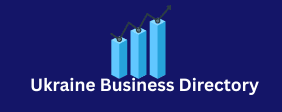Cash flow management is one of the most important pillars for the financial health of any company, especially in the distribution sector. Distributors deal with high volumes of incoming and outgoing products on a daily basis, varying payment and receipt terms, and the constant need to keep inventory stocked. Given this scenario, controlling cash flow accurately is essential to ensure liquidity, make strategic decisions, and avoid unpleasant financial surprises.
However, many distributors still face major challenges due to their failure to adopt effective financial control practices. The most common problems include lack of visibility into financial transactions, delays in monitoring accounts payable and receivable, difficulties in predicting future scenarios and, in more critical cases, imbalance between available capital and day-to-day obligations. These obstacles compromise not only the company’s operations, but also its ability to grow sustainably.
What is Cash Flow and Why is it Vital for Distributors
Cash flow is a detailed record of all financial transactions within a company, i.e., the control of cash inflows and outflows over a given period. This monitoring allows managers to know exactly iran phone number list how much cash the distributor has available, what bills are due and what amounts are yet to be received. More than just a control tool, cash flow is essential for making informed financial decisions.
There are different types of cash flow that must be considered for efficient management:
- Projected cash flow : This is the estimate of how much the company expects to receive and pay in a future period. This projection helps in planning and anticipating financial scenarios.
- Actual cash flow : represents the amounts that actually entered and left the company. It is used to compare with the projected amount and assess the accuracy of the planning.
- Free cash flow : This is the amount available after all operating expenses and investments have been paid. This indicator shows whether the company is generating enough capital to grow or distribute profits.
Main Problems in Manual Cash Flow Management
Many distributors still use manual methods to control cash flow , such as spreadsheets and paper notes. Although these tools may seem sufficient at first, as the company grows and financial movement to express no confidence intensifies, the risks and limitations become evident. Below are the main problems faced by those who still manage cash flow manually .
Lack of accuracy in data
Using spreadsheets requires constant, manual updates. A simple typing error or forgetting to record a transaction can compromise the entire financial analysis. Inaccurate information makes it difficult to truly understand the distributor’s situation, leading to erroneous decisions.
Difficulty in predicting financial scenarios
Without centralized and integrated data, it becomes much more canada cell numbers difficult to make cash flow projections . Distributors cannot visualize future scenarios clearly, which compromises planning and anticipation of periods of low liquidity. The lack of reliable forecasts prevents the creation of effective financial strategies.
Risk of debt and lack of working capital
When control over inputs and outputs is flawed, the distributor runs the risk of spending more than it should, accumulating debts or running out of resources to meet commitments. A lack of working capital is one of the main reasons why companies stop their activities, even with good sales.
Lost opportunities due to poor allocation of resources
Without a clear view of available cash and future obligations, managers may make decisions based on incorrect data. This leads to misallocation of resources, such as investments made at inappropriate times or turning down good opportunities due to lack of confidence in the numbers.
Human errors and rework in spreadsheets
Manual management is highly prone to human error . Incorrect formulas, forgetfulness, and duplicated information are common in non-automated spreadsheets. In addition, checking data takes time and generates rework, reducing the productivity of the finance team.
Given these problems, it is clear that manual cash flow management does not meet the needs of a distributor that wants to grow safely. Adopting a system for distributors eliminates these flaws, bringing more reliability, automation and efficiency to financial control.
